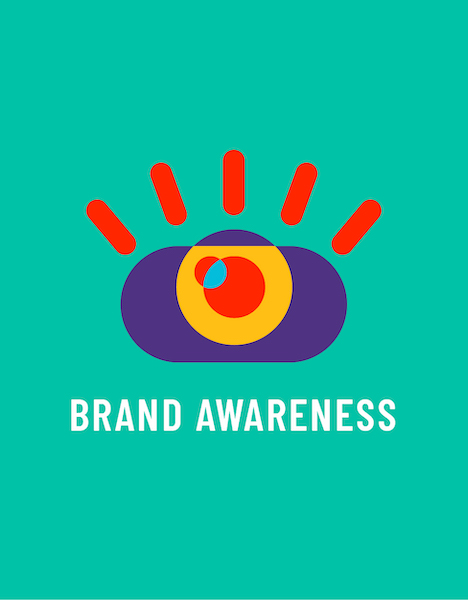Forget brand loyalty: The secret to long-term brand success is finding your Believers

Before the Covid-19 pandemic, brand marketers perhaps could argue about the importance of brand loyalty—diehard customers who could always be counted on to purchase your product above all others, even if yours cost a smidge more.
Today, the notion of brand loyalty is obsolete. Supply chain issues that have left store shelves intermittently empty, coupled with rising costs, pretty much hastened the demise of an idea that was already waning.
As much as we’d like to think otherwise, most consumers today are not loyal to any brand. Rather than be loyal to a brand, consumers’ relationships with brands are more fluid post-Covid. They enter into and sometimes fall out of brand relationships on whims. And just like any relationship, it can last a day, a year or a lifetime. It’s up to them. To maintain these relationships with customers, a brand needs to build on the relationship and invest in it daily.
Creating Brand Believers
When that brand relationship is nurtured properly, the ultimate payoff is better than loyalty—it’s creating brand believers. This is a focused group of your customers who have a shared set of interests, values or beliefs in views about your brand. It’s not all of your customers to be sure, but rather that core group that is most likely to evangelize on behalf of your brand. They’re the ones driving word of mouth, telling their friends and spreading the word online. Believers are connected by a pattern of shared symbolic consumption in which people choose brands for more than just the function they provide—for them, brands carry meaning, values and cultural symbols.
What does this mean? Customers are ready to have a relationship with a brand beyond the product itself. Brand believers make purchase decisions and balance functional needs with their aspirations, emotional desires and even their sense of self-identity. They’re also magnetic, inspiring other customers to be more like they are.
But who are they really, and how do you find them? That is the problem companies run into at this stage in the conversation. The reason is that for many companies, the customer data that’s key to identifying loyal customers does not work to find your believers. Believer data is typically never researched in the first place. That’s because this data is about how customers think and make decisions, not about the brand itself or whether they’re good customers. What motivates and drives them as people? What’s important to them?
Understanding Mindset Territories
More than simple surveys or demographic generalizations, getting at the heart of what makes people tick requires a deeper dive. Marketers need to don their professorial leather-patched houndstooth jackets and ask deeper, more academically inclined questions that attempt to understand how their customers approach life, what they value and what motivates their behavior.
The answer is not found in simple customer surveys but rather by looking inward at the data siloed within your company and asking the tough questions internally. Who are your customers and what’s really the most effective strategy to understand them?
So, a typical question we might ask CMOs to help them better understand who their customers really are might be: What are the psychographic characteristics that you associate with your customers? What do they value? What do you think draws them to your brand over another?
You need to work to uncover those answers, derived from data produced by asking the right questions. This information will reveal certain defining characteristics of your customers. For example, is your brand believer a social butterfly? Or perhaps someone who is happiest when they’re hanging out with a bunch of people and they’re the center of attention? Maybe they’re the “hardworking realist,” the “laid-back plodder,” the “playful explorer” or the “confident patriot.” Internally, we call these mindset territories or, more simply put, a detailed psychological categorization of who your customers are. Once we determine these varied, individual mindset territories, we begin to see the brand strategy road map that will be most effective at turning them from customers into brand believers. That means unlocking the specific needs that drive choices.
When you’re tapping into insights, and that data is informing the creative your agencies are delivering, you’re achieving a new level of synergy between what a brand represents and who the customer is. It is as remarkable as it is provable. It’s not happening by chance—it’s not your brand suddenly having a moment, but rather year-in, year-out sustained growth.
For example, one of our clients—a recognizable brand specializing in single-serve coffee—wanted to expand into tea in a major way. Our agency’s analysis showed their brand believer to be a mindset territory we describe as “the New Americans”—those with tea-drinking sensibilities and who are distinctly American. This insight became what drove our brand strategy and creative approach. An example of this was to build the brand around the idea of igniting the modern tea revolution and getting our brand believers to think differently about tea. This translated into creative executions that were decidedly American and not rooted in the traditionally floral, fruity and ornate tea world that our grandmothers embrace. The packaging design was simple, powerful and bold. Brand experiences were influenced through the lens of a technology innovator, where an orthodox tea leaf reaches its full potential married with precision. Those insights helped to design the brand experience and ultimately a successful entry into the tea category.
Okay, now that your brand and customer are aligned, there is one final piece that is missing: your employees. In my next article, I’ll look at the importance of getting your employees to become believers in your brand.
Read the full article here.

